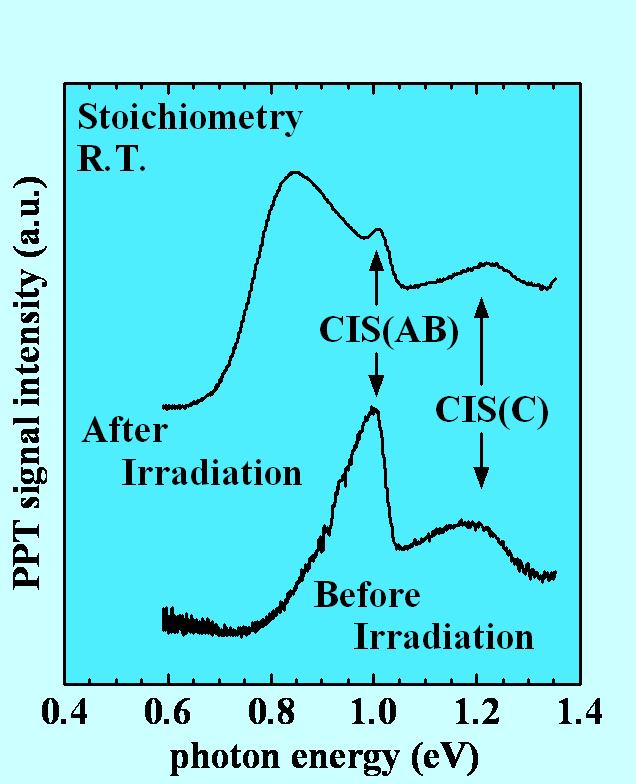Proton irradiated solar cell material CuInSe2
 Electron
nonradiative relaxation through the proton irradiation induced defects in
CuInSe2 (CIS) solar cell material were investigated by using a new developed
piezoelectric photo-thermal spectroscopy (PPTS). Among the observed three
peaks at 1.01, 0.93 and 0.84eV, it was concluded that the peak at 0.84eV was
due to the proton irradiation induced defect. This is because that this peak
appeared after irradiation with the proton energy of 0.38MeV and the fluence
of 1×1E14cm-2. The peaks at 1.01 and 0.93eV were attributed to free band edge
exciton and intrinsic defect level, respectively. The intensities for the
latter two peaks didn't change by the irradiation. Since the irradiation defect
was clearly observed at room temperature, we concluded that the PPTS technique
was a very sensitive tool to study the defect level in the irradiated semiconductor
thin film solar cell structures.
Electron
nonradiative relaxation through the proton irradiation induced defects in
CuInSe2 (CIS) solar cell material were investigated by using a new developed
piezoelectric photo-thermal spectroscopy (PPTS). Among the observed three
peaks at 1.01, 0.93 and 0.84eV, it was concluded that the peak at 0.84eV was
due to the proton irradiation induced defect. This is because that this peak
appeared after irradiation with the proton energy of 0.38MeV and the fluence
of 1×1E14cm-2. The peaks at 1.01 and 0.93eV were attributed to free band edge
exciton and intrinsic defect level, respectively. The intensities for the
latter two peaks didn't change by the irradiation. Since the irradiation defect
was clearly observed at room temperature, we concluded that the PPTS technique
was a very sensitive tool to study the defect level in the irradiated semiconductor
thin film solar cell structures.
(Abstrcat in APL,
2004)
(APL, EMRS, ISDRS)
Poster Award in EMRS2004, Strasbourg, France.